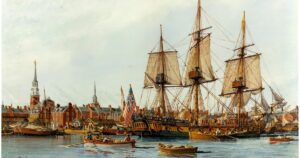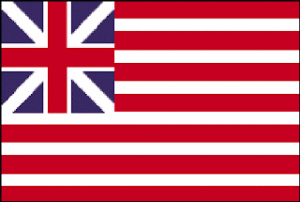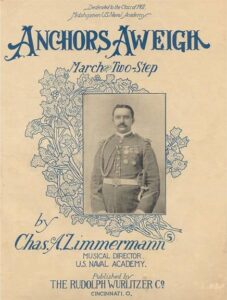 On October 13, 1775, the Continental Congress resolved:
On October 13, 1775, the Continental Congress resolved:
“That a swift sailing vessel, to carry ten carriage guns, and proportionate number of swivels, with eighty men, be fitted with all possible dispatch, for a cruise of three months . . . That a[nother] Committee of three be appointed to prepare an estimate for expense, and lay the same before Congress, and to contract with proper persons to fit out the vessel . . . That another vessel be fitted out for the same purposes [and] a committee [be] appointed to bring in regulations for [a] navy.”
Initially only a few delegates (led by John Adams), such as Gadsen of South Carolina, Hewes of North Carolina, Lee of Virginia, and Franklin of Pennsylvania, were ready to propose a Navy. The opposition, led by Samuel Chase of Maryland, thought it folly to take on the Royal Navy of Great Britain. However, by October 5, a resolution narrowly passed to form a committee of three, of which Adams was one, to plan how to intercept two British ships heading to Canada with arms and powder. Though this pushed the debate forward, not until a letter from George Washington arrived revealing the British fleet of six sailing from England, which showed (in the words of Lord North) that they were “determined to push the War to the utmost,” did the threat push the October 13 resolution into the majority.
 The foundations for a navy had already been laid previously by General George Washington under the authority of resisting British aggression given him by Congress. He had created his own “schooner fleet” (at his own expense) to resist British shipping during the siege of Boston that began in mid-1775 and lasted until March of 1776, when the British would evacuate Boston.
The foundations for a navy had already been laid previously by General George Washington under the authority of resisting British aggression given him by Congress. He had created his own “schooner fleet” (at his own expense) to resist British shipping during the siege of Boston that began in mid-1775 and lasted until March of 1776, when the British would evacuate Boston.
Washington’s cruisers flew the Appeal to Heaven flag with a pine tree in the center. The pine tree was a symbol of New England’s resistance to Britain’s policy of marking and seizing pines for their masts, assuming all land in the colonies belonged to the Empire. This policy culminated in the Pine Tree Riot of 1772 in Goffstown and Weare, New Hampshire, where the colony resisted these attempts.
This phrase “appeal to heaven” was well-known, having been coined by John Locke in 1689 for the express purpose of appealing to God Himself when tyrannical governments fail to follow their written charters for the protection of God-given rights. The first ship to be launched by Washington was the Hannah on September 2, 1775. She soon captured the HMS Unity. In fact, all six of his cruisers captured more than 35 British ships by March of 1776!
 The first ship commissioned after the October 13 authorization was the Alfred, launched on December 3, 1775. The second ship, in the foreground of the picture to the left, was the Columbus. The schooners Hornet, Wasp, and Fly would soon follow.
The first ship commissioned after the October 13 authorization was the Alfred, launched on December 3, 1775. The second ship, in the foreground of the picture to the left, was the Columbus. The schooners Hornet, Wasp, and Fly would soon follow.
 This picture also shows the Grand Union flag being raised aboard the Alfred by First Mate John Paul Jones. The first flag of the united colonies, it was raised by Washington in Cambridge on January 1, 1776 during the British siege of Boston. The Grand Union flag was also known as the Congress Colors, the First Navy Ensign, and the Cambridge Flag, and could be considered the official flag of the American Revolution. It had 13 red and white stripes, and a blue field with the red cross of St. George of England and the white cross of St. Andrew of Scotland.
This picture also shows the Grand Union flag being raised aboard the Alfred by First Mate John Paul Jones. The first flag of the united colonies, it was raised by Washington in Cambridge on January 1, 1776 during the British siege of Boston. The Grand Union flag was also known as the Congress Colors, the First Navy Ensign, and the Cambridge Flag, and could be considered the official flag of the American Revolution. It had 13 red and white stripes, and a blue field with the red cross of St. George of England and the white cross of St. Andrew of Scotland.
John Paul Jones was born “John Paul” on July 6, 1747 in Scotland. At the early age of 12, he entered the British merchant marine, going to sea as a cabin boy. He became first mate of the slaver brigantine in 1766, but soon was disgusted with the slave trade and left that business. History.com, in its article on Jones, writes: “In 1773 Jones was caught in a very difficult situation: he murdered a mutinous sailor on the island of Tobago in self-defense. Because Jones believed he wouldn’t receive a fair trial, he fled to America. It was there he added the last name ‘Jones’ to conceal his identity.”
 In 1775, Jones entered the Continental Navy soon after its inauguration. After being commissioned as first lieutenant on the Alfred, he was quickly promoted to captain in 1776, and then became commander of the Providence as he was sent to battle in Europe. Jones’ passion for liberty and battle were quickly seen by many. Lauren Pitre writes: “In command of Ranger in 1777 and 1778, he operated in British home waters and made audacious raids on England’s shore. In recognition of his exploits, he was placed in command of five French and American vessels. Aboard his flagship, Bonhomme Richard, Jones led his small squadron in the capture of seven merchantmen off the Scottish coast.”
In 1775, Jones entered the Continental Navy soon after its inauguration. After being commissioned as first lieutenant on the Alfred, he was quickly promoted to captain in 1776, and then became commander of the Providence as he was sent to battle in Europe. Jones’ passion for liberty and battle were quickly seen by many. Lauren Pitre writes: “In command of Ranger in 1777 and 1778, he operated in British home waters and made audacious raids on England’s shore. In recognition of his exploits, he was placed in command of five French and American vessels. Aboard his flagship, Bonhomme Richard, Jones led his small squadron in the capture of seven merchantmen off the Scottish coast.”
On September 23, 1779, John Paul Jones, who became known as the “father of the American Navy,” fought one of the bloodiest engagements in naval history. His 40-gun ship, Bonhomme Richard, fought the 44-gun Royal Navy frigate Serapis. Though his own vessel was sinking, he refused to surrender, famously replying “I have not yet begun to fight!” He tied his ship to the frigate and boarded to continue fighting. Three hours later, after hand-to-hand combat, the Serapis surrendered, and Jones took command.
 As was the case with the birth of the United States Army, the mark of honoring God, as well as the courage and passion to defend liberty, marked the birth of the United States Navy. The Naval Hymn “Anchors Aweigh,” written by Charles A. Zimmerman in 1906 with lyrics by Alfred Hart Miles, became the official song of the U.S. Navy in 1907. The “weigh anchor” is an old English sailor’s expression meaning lifting the anchor that the ship may go into battle. One of the original stanzas expresses this honor and faith in God when battling on the seas:
As was the case with the birth of the United States Army, the mark of honoring God, as well as the courage and passion to defend liberty, marked the birth of the United States Navy. The Naval Hymn “Anchors Aweigh,” written by Charles A. Zimmerman in 1906 with lyrics by Alfred Hart Miles, became the official song of the U.S. Navy in 1907. The “weigh anchor” is an old English sailor’s expression meaning lifting the anchor that the ship may go into battle. One of the original stanzas expresses this honor and faith in God when battling on the seas:
“Blue of the Seven Seas; Gold of God’s Great Sun; Let these our colors be till all of time be done, done, done; By Severn’s shore we learn Navy’s stern call; Faith, Courage, Service true, with Honor, Over Honor, Over All.”







